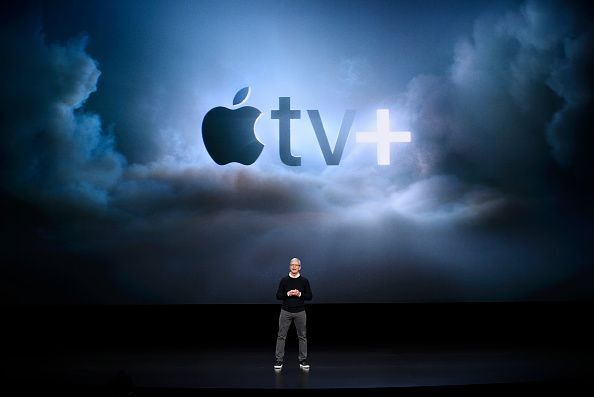Apple And Disney Have A Huge Advantage In Streaming

We're within a month of the launches of two highly anticipated streaming video services: Apple's (NASDAQ:AAPL) Apple TV+ and Disney's (NYSE:DIS) Disney+. Both management and analysts have lofty expectations for how many subscribers those services can attract. Disney told investors it expects 60 million to 90 million Disney+ subscribers by 2024. Meanwhile, Wedbush analyst Daniel Ives expects Apple TV+ to reach 100 million subscribers by the end of 2023.
Those numbers may seem astronomical, even compared to Netflix's (NASDAQ:NFLX) 150 million global subscribers. Remember, it took Netflix over a decade to build that subscriber base.
But both Apple and Disney have something Netflix and their other major competitors lack: the ability to subsidize subscriptions with other streams of revenue.
Subscriptions to much more than streaming
Both Apple and Disney are in a position to sell subscriptions to their streaming services as a means of locking consumers into their respective ecosystems. They're using cheap subscriptions to sell other products and services.
Apple's literally using Apple TV+ as marketing material for its device sales. It's offering a free year of the service to anyone who buys a new iPhone, iPad, Apple TV, iPod touch, or Mac. Importantly, that tactic's likely much more effective than dropping the price of a new iPhone by $50, or spending the money it spent on content on additional marketing campaigns due to consumers' perceived value of the bundle.
Apple can also benefit from using Apple TV+ as an entryway for consumers into Apple TV Channels. Channels offers Apple greater control over its revenue, profit, and the user experience than distributing other streaming services via the App Store. Importantly, Channels offers another mechanism to lock customers into the Apple ecosystem.
Meanwhile, Disney's a veteran of the strategy. It's sold toys, games, and theme park tickets on the back of its popular intellectual property for decades. Disney+ takes the strategy a step farther.
Marvel fans will be lost during the next Avengers blockbuster if they don't subscribe to Disney+. Disney is cleverly integrating exclusive Marvel films and series into Disney+, which ought to spur both subscriptions and box office ticket sales for the company. Likewise, the Star Wars original series set to debut on Disney+ should help drive fans to Disney's theme parks to check out the new Star Wars expansions -- not to mention all the new Star Wars toys that are sure to get a sales boost.
Disney is also using bundling to increase advertising inventory for its other streaming services, Hulu and ESPN+. Disney is well positioned to grow average ad revenue per subscriber as it integrates Hulu ad sales with the rest of its sales team and gathers a more complete picture of its audience's viewing habits thanks to the bundle.
Since Apple and Disney have other, bigger revenue streams than streaming video, they can afford to keep their prices low. In fact, they're incentivized to keep their prices low in order to drive sales in other parts of their business. Those low prices should help drive rapid subscriber growth.
The competition can't keep prices that low
Apple and Disney's competitors in streaming are much more reliant on subscription revenue. Netflix generates practically all of its revenue from subscriptions. Other competitors from big media companies and pay-TV distributors are largely seen as a means of offsetting the impact of cord-cutting, not reducing it or supporting other parts of the business.
As a result, there will be a chasm in the pricing for those services compared to Apple TV+ and Disney+. Netflix charges $12.99 per month for a plan that's comparable to Disney+ or Apple TV+. AT&T's WarnerMedia is expected to charge even more for HBO Max. (HBO Now costs $14.99 per month, and HBO Max will cost the same or more.)
NBCUniversal hasn't announced pricing for its service, Peacock. Its feeble attempt at subsidizing its pricing, though, is a plan to offer an ad-supported version of the service for free to Comcast cable subscribers.
As competitors feel pressure to raise prices in order to grow revenue from streaming, Apple and Disney will be in a position to hold their pricing steady as long as it's benefiting other parts of their businesses. That only makes Apple TV+ and Disney+ more attractive to consumers. At some point in the future, they may raise prices and turn streaming into a profit center, but that's a relatively long-term goal for both companies. Disney doesn't expect Disney+ to break even until 2024.
Adam Levy owns shares of Apple and Walt Disney. The Motley Fool owns shares of and recommends Apple, Netflix, and Walt Disney. The Motley Fool has the following options: long January 2021 $60 calls on Walt Disney, short October 2019 $125 calls on Walt Disney, short January 2020 $155 calls on Apple, and long January 2020 $150 calls on Apple. The Motley Fool recommends Comcast. The Motley Fool has a disclosure policy.
This article originally appeared in The Motley Fool.



















